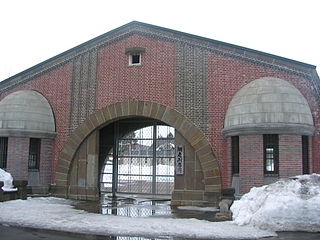 W
WAbashiri Prison is a prison in Abashiri, Hokkaido Prefecture that opened in 1890. The northernmost prison in Japan, it is located near the Abashiri River and east of Mount Tento. It holds inmates with sentences of less than ten years. Older parts of the prison were relocated to the base of Mount Tento in 1983, where they operate as the country's only prison museum.
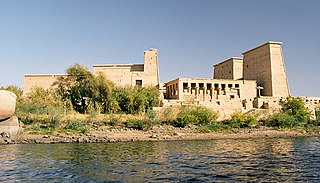 W
WAgilkia Island is an island in the reservoir of the Old Aswan Dam along the Nile River in southern Egypt; it is the present site of the relocated ancient Egyptian temple complex of Philae. Partially to completely flooded by the old dam's construction in 1902, the Philae complex was dismantled and relocated to Agilkia island, as part of a wider UNESCO project related to the 1960s construction of the Aswan High Dam and the eventual flooding of many sites posed by its large reservoir upstream.
 W
WThe Alconétar Bridge, also known as Puente de Mantible, was a Roman segmental arch bridge in the Extremadura region, Spain. The ancient structure, which featured flattened arches with a span-to-rise ratio of 4–5:1, is one of the earliest of its kind. Due to its design, it is assumed that the bridge was erected in the early 2nd century AD by the emperors Trajan or Hadrian, possibly under the guidance of Apollodorus of Damascus, the most famous architect of the time.
 W
WThe Ara Pacis Augustae is an altar in Rome dedicated to Pax, the Roman goddess of Peace. The monument was commissioned by the Roman Senate on July 4, 13 BC to honour the return of Augustus to Rome after three years in Hispania and Gaul and consecrated on January 30, 9 BC. Originally located on the northern outskirts of Rome, a Roman mile from the boundary of the pomerium on the west side of the Via Flaminia, the Ara Pacis stood in the northeastern corner of the Campus Martius, the former flood plain of the Tiber River and gradually became buried under 4 metres (13 ft) of silt deposits. It was reassembled in its current location, now the Museum of the Ara Pacis, in 1938, turned 90° from its original orientation so that the original western side now faces south.
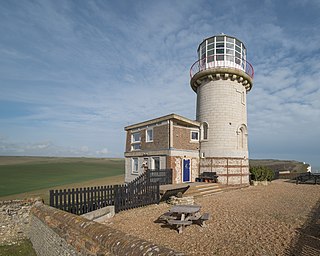 W
WThe Belle Tout Lighthouse is a decommissioned lighthouse and British landmark located at Beachy Head, East Sussex close to the town of Eastbourne. It has been called "Britain's most famous inhabited lighthouse" because of its striking location and use in film and television. In 1999, the Grade II listed building was moved in one piece to prevent it from succumbing to coastal erosion.
 W
WBodenseesender was a radio transmission facility of SWR near Meßkirch-Rohrdorf in Southern Germany for medium wave established in 1964. It shut down on January 8, 2012, and one month later, on February 7, 2012, the last mast was demolished.
 W
WThe Chapel of Dzordzor, is part of an Armenian monastery located in Maku County, West Azerbaijan Province, Iran, on Zangmar River near the village of Baron. The monastery had its heyday in the fourteenth century before being abandoned and destroyed in the early seventeenth century, when Shah Abbas I decided to displace the local Armenians.
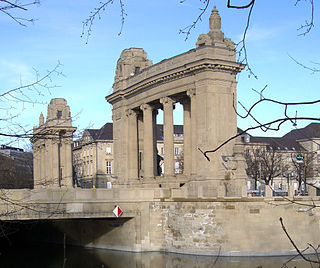 W
WCharlottenburg Gate with Charlottenburg Bridge is a Neo-Baroque structure in the Charlottenburg district of Berlin. Erected in 1907 at the behest of the then independent City of Charlottenburg, it was meant as a counterpart to Berlin's Brandenburg Gate.
 W
WThe Church of the Assumption of the Virgin Mary is a late Gothic church building in Most, a city in the Ústí nad Labem Region of the Czech Republic.
 W
WEhrismann Residence is a western style foreign residence built for Fritz Ehrismann, 20th century Swiss merchant, located at Motomachi, Naka-ku, Yokohama.
 W
WThe Former Kameoka Family Home is a residential structure that was originally located in Koori Town within the Date District of Fukushima Prefecture. It was dismantled and rebuilt within the same prefecture, in the town of Hobara Town in Date City. The house is designated an Important Cultural Property of Japan.
 W
WSt. Nicholas's Church is the centerpiece of the Lviv Museum of Folk Architecture and Culture, better known as Shevchenkivskyi Hay. It is also part of the Lavra of Saint John of the Ukrainian Studite Monks. This traditional tripartite timber church, encircled by a wooden fence, was transferred to Lviv from Kryvka village, Turkivskyi Raion in 1930. It was originally built by Boiko carpenters in 1763. During the First World War the church was damaged by a shell that pierced the upper gallery.
 W
WThe Lion Fountain, also known as the Vilhena Fountain, is a Baroque fountain located in St Anne Square in Floriana, Malta. It was installed in 1728 by Grand Master António Manoel de Vilhena, and it was relocated a few metres from its original location in the 1950s.
 W
WThe Longwave transmitter Europe 1 is the oldest privately owned radio station in Germany, situated between Felsberg and Berus/Saar, Germany. It transmitted on 183 kHz with a power of 2,000 kilowatts a French speaking programme, Europe 1 toward France. It was the highest power radio broadcasting transmitter in Germany. Longwave transmissions stopped on 31 December 2019.
 W
WMarble Arch is a 19th-century white marble-faced triumphal arch in London, England. The structure was designed by John Nash in 1827 to be the state entrance to the cour d'honneur of Buckingham Palace; it stood near the site of what is today the three-bayed, central projection of the palace containing the well-known balcony. In 1851, on the initiative of architect and urban planner Decimus Burton, a one-time pupil of John Nash, it was relocated to its current site. Following the widening of Park Lane in the early 1960s, the site became a large traffic island at the junction of Oxford Street, Park Lane and Edgware Road, isolating the arch. Admiralty Arch, Holyhead in Wales is a similar arch, also cut off from public access, at the other end of the A5.
 W
WMeiji-mura is an open-air architectural museum/theme park in Inuyama, near Nagoya in Aichi prefecture, Japan. It was opened on March 18, 1965. The museum preserves historic buildings from Japan's Meiji (1867–1912), Taisho (1912–1926), and early Shōwa (1926–1989) periods. Over 60 historical buildings have been moved and reconstructed onto 1 square kilometre of rolling hills alongside Lake Iruka. The most noteworthy building there is the reconstructed main entrance and lobby of Frank Lloyd Wright's landmark Imperial Hotel, which originally stood in Tokyo from 1923 to 1967, when the main structure was demolished to make way for a new, larger version of the hotel.
 W
WThe Monument to Christopher Columbus, on a major traffic roundabout along Mexico City's Paseo de la Reforma, was dedicated in 1877. The statue was removed on 10 October 2020 "for restoration purposes" two days before a planned protest. On 12 October 2021, it was announced that the statue would be replaced with The Young Woman of Amajac, a sculpture of an indigenous Huastec woman.
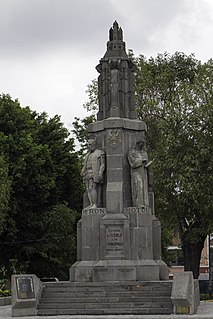 W
WThe Monumento a los Fundadores de Puebla is installed in Puebla, in the Mexican state of Puebla. It is the work of Ernesto Tamariz.
 W
WThe Morisco Kiosk is a kiosk structure in Colonia Santa María la Ribera in Mexico City, Mexico. It is situated in the Alameda Park in the center of the Colonia neighborhood, at the intersection of Dr. Atl and Salvador Miron Streets, near Metro Buenavista. The kiosk is built in the neo-Mudejar architectural style that was prevailing in Spain in the 19th century. It is completely made of wrought iron with a glass cupola dome at the top. The kiosk is made of panels that can be disassembled and moved if needed.
 W
WThe Obelisk of Axum is a 4th-century CE, 24-metre-tall (79-feet) phonolite stele/obelisk, weighing 160 tonnes, in the city of Axum in Ethiopia. It is ornamented with two false doors at the base and features decorations resembling windows on all sides. The obelisk ends in a semi-circular top, which used to be enclosed by metal frames.
 W
WRhinocéros is a 1878 sculpture by Henri Alfred Jacquemart; a life-sized depiction of a rhinoceros in cast iron. Commissioned to stand outside the Trocadéro Palace for the 1878 Exposition Universelle, it was completed quickly to be ready in time for the opening of the fair. Well received at the time, it was moved in 1935 to allow for the remodelling of the palace and grounds for the 1937 Exposition Internationale des Arts et Techniques dans la Vie Moderne. The sculpture was sited near to the Porte de Saint-Cloud before being acquired by the Musée d'Orsay in 1985. It now stands in the esplanade in front of the museum, with two other animal statues from the 1878 exposition.
 W
WSt James Old Cathedral, an Anglican church, is the oldest church in Melbourne, Australia, albeit not on its original site. It is one of the relatively few buildings in the central city which predate the Victorian gold rush of 1851. The building was demolished and relocated in 1914 to a corner site of King Street and Batman Street.
 W
WSan Nicolò all'Arena is a Roman Catholic parish church in the historic centre of Verona, Italy dedicated to Saint Nicholas. It is located close to the Arena, a well-preserved 1st century AD Roman amphitheatre. The present Baroque building was constructed between 1627 and 1683 on the site of an earlier Romanesque church which had existed since the 12th century or earlier. The church's façade remained incomplete until the neoclassical façade of the church of San Sebastiano was relocated to San Nicolò in the 1950s, after the former church was destroyed during World War II.
 W
WSan Pedro de la Nave is an Early Medieval church in the province of Zamora, Spain. It is in the locality of El Campillo in the municipal unit of San Pedro de la Nave-Almendra. It was moved from its original site near the River Esla when the land was to be flooded by the construction of the Ricobayo reservoir.
 W
WSan Sebastiano was a Roman Catholic church in the historic centre of Verona, Italy dedicated to Saint Sebastian. It was founded as an oratory in the 10th century, and it eventually became a parish church and was rebuilt in the Romanesque style. Between the 16th and 19th centuries, the church intermittently belonged to the Jesuits. They renovated the building in the late 16th and early 17th centuries, but the façade was only completed in 1830.
 W
WSanta María de Óvila is a former Cistercian monastery built in Spain beginning in 1181 on the Tagus River near Trillo, Guadalajara, about 90 miles (140 km) northeast of Madrid. During prosperous times over the next four centuries, construction projects expanded and improved the small monastery. Its fortunes declined significantly in the 18th century, and in 1835 it was confiscated by the Spanish government and sold to private owners who used its buildings to shelter farm animals.
 W
WThe statue of Heydar Aliyev is a bronze sculpture of the third president of Azerbaijan, Heydar Aliyev (1923–2003). It was originally installed along Paseo de la Reforma, in Chapultepec, Miguel Hidalgo, Mexico City.
 W
WA statue of former Mexican professional golfer Lorena Ochoa was installed in Puerto Vallarta, in 2012.
 W
WThe War Memorial is a memorial obelisk in Floriana, Malta, which commemorates the dead of World War I and World War II. It was inaugurated on 11 November 1938 by Governor Charles Bonham-Carter to the memory of those killed in World War I, but in 1949 it was rededicated to those killed in both world wars.
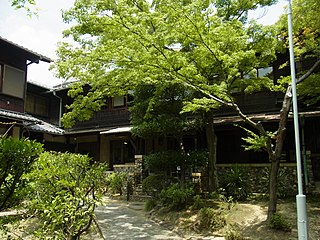 W
WYōki-sō (揚輝荘) is a Japanese villa and gardens located in Chikusa-ku, Nagoya, central Japan. It is close to Nittai-ji temple.